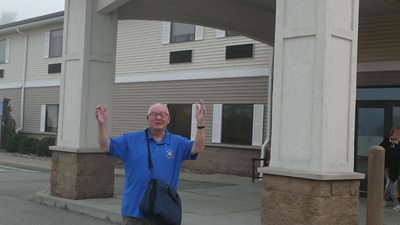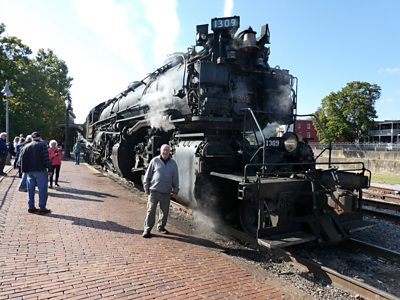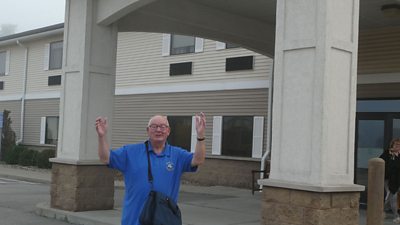I had always believed the Archers’ home, Ambridge, to be entirely fictitious: years of working as a Press Officer in the home of Radio 4’s flagship serial at the erstwhile Pebble Mill Studios in Birmingham had suggested nothing else.
I was aware that the Worcestershire village of Inkberrow had always claimed to be the village on which Ambridge was based, with its Old Bull pub as the basis of The Bull.
There had long been a niggle in my head about the veracity of this, when I learned from my former News Editor at 91Èȱ¬ Radio Humberside, the late Jim Latham, that when he moved to the Lincolnshire village of Rippingale, near Bourne, he discovered that the Archers’ founder, Godfrey Baseley, had been given the idea by a farmer in the village, Henry Burtt, whom he’d interviewed for a farming programme – and that Rippingale’s pub was (and still is) The Bull (not The Old Bull).
All that was a long way from my mind until I set off recently for Pittsburgh in the North East of the USA, one of a group of a dozen British and Australian railway enthusiasts intent on riding steam trains in Pennsylvania and neighbouring states amidst the spectacular colours of trees turning their foliage to vivid autumnal scarlet, gold and yellow.
First visit, (unadvertised) late at night upon landing, was to something much smaller in scale – the layout of a model railway club called the Ohio Valley Lines – located in the Old Economy Historic District of guess where? Ambridge.
And the first overnight before setting off further afield? The Ambridge Inn.
This was a true revelation, all those years after leaving the 91Èȱ¬ – Ambridge is not a figment of Radio 4’s collective imagination or generations of Archers’ editors, script writers, producers and actors; not in Worcestershire or Lincolnshire. It’s on the other side of The Pond – in Pennsylvania.
I learned that Ambridge is a borough in Beaver County; it was incorporated as a company town by the American Bridge Company (hence the name) in 1905, 16 miles north west of Pittsburgh along the Ohio River.
It's home to around 7,000 people and had become a world leader in steel production, then bridge building – creating structures for export around the world. After the decline of steel making in the Pittsburgh area, it is now reviving, celebrating its heritage, refurbishing buildings and attracting tourists to build a new economy.
Indeed, the decline of both the steel industry and the town is chronicled in Rust Belt Boy by Ambridge native, Paul Hertmeky.
I had hoped the Ambridge Inn might have souvenirs for sale or even a letterhead with the name: no – nowt, not even a sign on the outside of the hotel. Lost in the autumnal mist that encircled the place in the morning as we prepared to set off in pursuit of big steam, I could not even pick out the one solitary sign on the highway which advertised the place: smothered in the misty gloom rising from the neighbouring Ohio River. It seems the majority of Ambridge Inn customers are crews from freight trains using the adjacent railroad yards – everything in the hotel spotlessly clean, efficient but sadly, almost totally anonymous.
More here:
Chris Bates MBE was a 91Èȱ¬ Press Officer based in Birmingham from 1984 to 1995 and previously worked as a news producer in 91Èȱ¬ Local Radio from 1970 at Blackburn and Humberside. In retirement, he lives with his wife Julie near Woodhall Spa in Lincolnshire.


